#JapaneseAmericans
Text

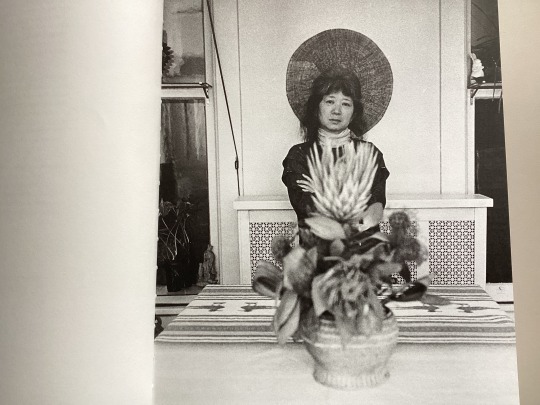
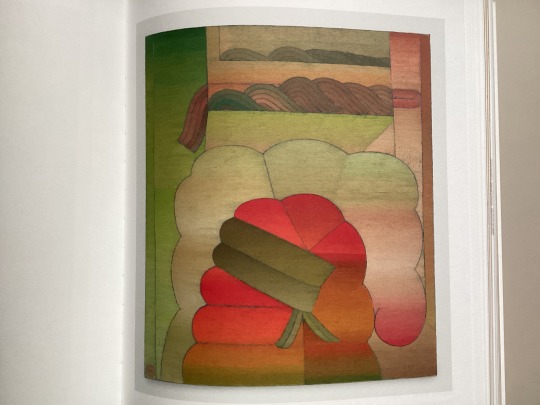
“I have no place to take myself except painting.” – Miyoko Ito, 1978.
Miyoko Ito (1918–1983) was a Japanese American painter, born in Berkeley, California, and was active in Chicago where she studied at the Art Institute of Chicago.
When the World War II began in 1941 in the United States with the attack on Pearl Harbor, Ito was studying art at University of California, Berkeley. She was a senior scheduled to graduate in May 1942. In April 1942, Ito married Harry Ichiyasu to avoid being separated during the wartime incarceration of Japanese Americans. Her husband was president of the senior class of the Japanese constituency at UC Berkeley. They were married on April 11th, but by the end of April they were sent to Tanforan internment camp near San Francisco, and later sent to Topaz under an Executive Order signed by Franklin D. Roosevelt. Ito received her diploma while she was in the internment camp, then received a grant to attend a graduate program at Smith College. She stayed there for one year before going on to study at the Art Institute of Chicago. Ito said she cried when she opened her diploma. She graduated with highest honors.
Miyoko Ito was hardly unknown during her lifetime, though she gained some attention and was granted residency fellowships at MacDowell in New Hampshire. It was there that she experienced “the meaning of full expression in the conductive environment,” she wrote in her “Plan of Work” in 1983. She continued, “I would like to escape the heretofore stifling condition of low ceiling, dim daylight, and inadequate floor space” of her bedroom studio in her house.
This publication, “Miyoko Ito: Heart of Hearts” is the first book dedicated to the life and work of Miyoko Ito, long overdue for this artist.
Image 1: Front cover featuring “Island in the Sun”, 1978, Oil on canvas, 38”x 33”
Image 2: Portrait of Miyoko Ito by Mary Baber, 1975
Image 3: “Aura”, 1966, Oil on canvas, 50”x 45”
Miyoko Ito : heart of hearts
Pre-Echo, 2023.
452 pages : illustrations (chiefly color), portraits ; 30 cm
English
HOLLIS number: 99157645381703941
#AANHPIHeritageMonth#AsianAmericanNativeHawaiianPacificIslanders#AsianAmericanArtists#JapaneseAmerican#JapaneseAmericanArtist#JapaneseAmericanWomenArtist#WomenArtist#MiyokoIto#HarvardFineArtsLibrary#Fineartslibrary#Harvard#HarvardLibrary#AbstractPainting
21 notes
·
View notes
Text
Random thing but I remember the first day of sociology class my prof passed out photos of the Japanese internment camps and the first student that she called on says with full confidence “Those are Chinese people, they’re being discriminated against.” 🤓🤓
Bruh my family didn’t get forcibly interned for your dumbass to say that they were Chinese (it literally said Japanese on one of the photos)
Anyway, it’s very disheartening to know how many people don’t know what happened to Japanese Americans in the internment camps and how it’s affected our culture. I’m here to answer any questions and elaborate further, but it’s unfortunately not well known.
#japaneseamerican#japanese#japanese internment#we were in the japanese internment camps#internment camp#bruh
3 notes
·
View notes
Photo

stamping the book of names | september 23 2022 #japaneseamerican #remebering #photooftheday #jamn
0 notes
Photo
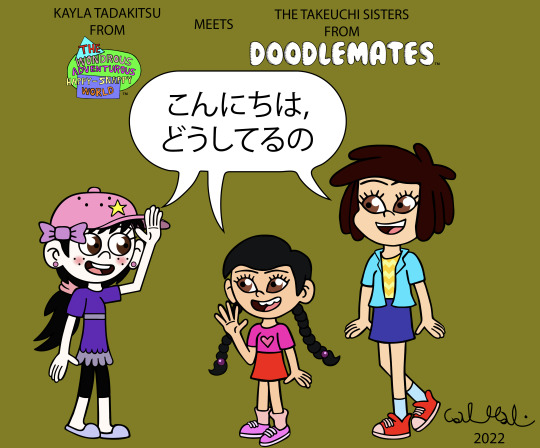
This art work shows my OC #kaylatadakitsu meeting #genevievetakeuchi and #miatakeuchi from #doodlemates (the Takeuchi sisters belong to @danielwresch). When the met each other, they say "Hello, how are you doing" in Japanese. What do these 3 girls have in common? Well, they are all #japaneseamerican
Be sure to see #danielwresch live on Twitch for his fun doodle stream each Friday at 10 PM, and show support to him.
#drawing #thewondrousadventuroushappysnappyworld #doodlematescomic #doodlematesfanart
0 notes
Photo

Happy #memorialday 🙏🏽 Never forget the #442ndregimentalcombatteam the most decorated #USArmy #combatunit in #militaryhistory. 4,500 #JapaneseAmericans, also known as #budaheads signed up for service 2/3 were from #Hawaii, including my grandfather #RoyTsuya who was badly injured in a transport accident probably saving his life. The #442nd coined the term #goforbroke as their battle cry and participated in 8 major campaigns, most notably saving the 'lost battalion' who were cut off from #alliedforces. The #442ndrct was ordered in beyond the frontlines, loosing 400 men to save the 221 men of the #lostbattalion Most of the 442nd survivors are getting very old, my grandfather passed from old age in his 90's a few years ago, please cherish what these men sacrificed for a country that gave them 2 choices, go to jail #internmentcamps or go to war for the USA. The husband of #yurikochiyama #billkochiyama was also in the 442nd. Yuri's twin brother #peternakahara was not in the 442nd but was in the US army during WW2. Their father who was a fisherman and already in bad health (he just got home from the hospital)was arrest and 'detained'' on suspensions of being 'Japanese'(a possible threat to national security)he was interrogated w/ sleep deprivation and withheld his diabetes meds for 5 weeks, he died 12 hrs after his release and then #fdr signed #executiveorder9066 which sent the rest of Nakahara family(mother, Yuri, and brother) to #jeromearkansas #warrelocationinternmentcamp #neverforegtexecutiveorder9066 Yuri stated an internmanet camp program writing letters to the Japanese American soldiers, Bill went to visit the camp and they met and kept up a long distance relationship until the war was over and she was released, they then moved to #Harlem had 6 kids and worked for #MalcomX and #civilrights movements until her death. #asianpacificislanderheritagemonth #asianpacificamericanheritagemonth https://www.instagram.com/p/CAoF-xvlOAa/?igshid=l37fm5mwrp8j
#memorialday#442ndregimentalcombatteam#usarmy#combatunit#militaryhistory#japaneseamericans#budaheads#hawaii#roytsuya#442nd#goforbroke#alliedforces#442ndrct#lostbattalion#internmentcamps#yurikochiyama#billkochiyama#peternakahara#fdr#executiveorder9066#jeromearkansas#warrelocationinternmentcamp#neverforegtexecutiveorder9066#harlem#malcomx#civilrights#asianpacificislanderheritagemonth#asianpacificamericanheritagemonth
0 notes
Photo
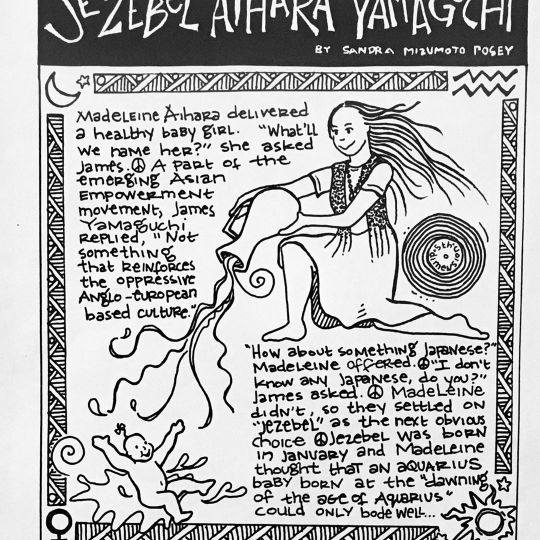
Episode 2, or not. I arranged them in a sequence that vaguely works; some may be missing entirely. #comic #japaneseamerican #japaneseamericans #rafushimpo #hippies #comics #jezebel https://www.instagram.com/p/B-NKxBolupd/?igshid=1cutl97q3zs6q
0 notes
Photo
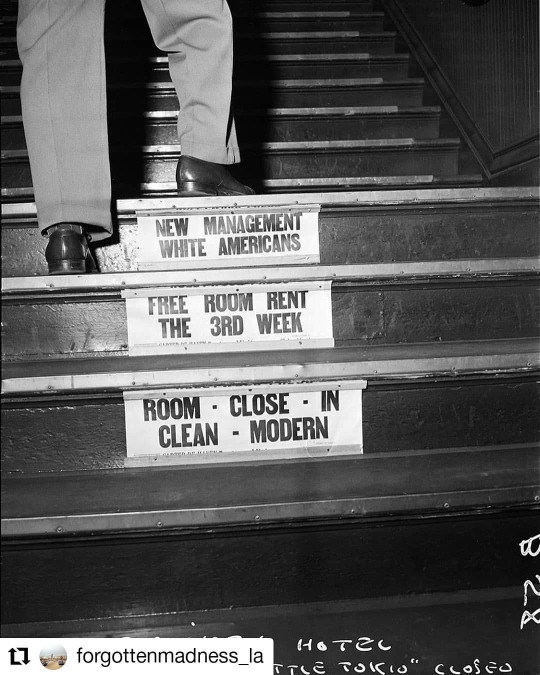
#Repost @forgottenmadness_la • • • • • • When Japanese Americans were forced to evacuate Los Angeles in February of 1942, on order of the president, some white entrepreneurs saw opportunity and quickly rushed into Little Tokyo to commandeer the successful businesses run by Japanese Americans. . > This wouldn’t pan out for them, though, as the empty space in Little Tokyo presented a solution to black Americans who were coming to Los Angeles to work in the defense industry, but unable to find a place to live (due to segregation and housing shortages). Almost immediately, Little Tokyo would become an African American neighborhood known as “Bronzeville” and white Angelenos would not venture in to patronize the dwindling white-stolen businesses. . > Note: this history is very poorly documented, with contradictory information from respectable sources printed all over the place. If you have knowledge of anything I’m missing or anything I have wrong, then I hope you will correct me in the comments below. > > > #whiteowned #littletokyo #racism #internment #japaneseamerican #japaneseamericans #bronzeville #losangeleshistory #losangeles #la #historyla #lahistory #californiahistory #bigotry #africanamericanhistory #blackhistory #worldwar2 #wwii #secondworldwar #ww2 #segregation #ushistory #ww2history #confiscation #history #japaneseinternment #evacuation #africanamericans #race #racerelations https://www.instagram.com/p/B7AOLPcl5Q6/?igshid=l1undx5a3dv7
#repost#whiteowned#littletokyo#racism#internment#japaneseamerican#japaneseamericans#bronzeville#losangeleshistory#losangeles#la#historyla#lahistory#californiahistory#bigotry#africanamericanhistory#blackhistory#worldwar2#wwii#secondworldwar#ww2#segregation#ushistory#ww2history#confiscation#history#japaneseinternment#evacuation#africanamericans#race
0 notes
Photo

1925 Japanese women wearing kimomos at Angel Island Immigration Station in Northern California. Angel Island was the equivalent of Ellis Island for the West Coast. Image from the California State Parks museum collection number 231- 18- 96 . . . . . . #HistoricalGarments #1920s #VintageStyle #Couture #CostumeDesign #1920sFashion #DressHistory #VintageKimono #FashionHistory #HistoriaDeLaModa #StateParks #JapaneseAmerican #Indumentaria #Historia #FotografiaAnalogica #HistoryOfPhotography (at Angel Island Immigration Station) https://www.instagram.com/p/CNZIGN8B0sV/?igshid=1q6yvh60s31mb
#historicalgarments#1920s#vintagestyle#couture#costumedesign#1920sfashion#dresshistory#vintagekimono#fashionhistory#historiadelamoda#stateparks#japaneseamerican#indumentaria#historia#fotografiaanalogica#historyofphotography
76 notes
·
View notes
Photo
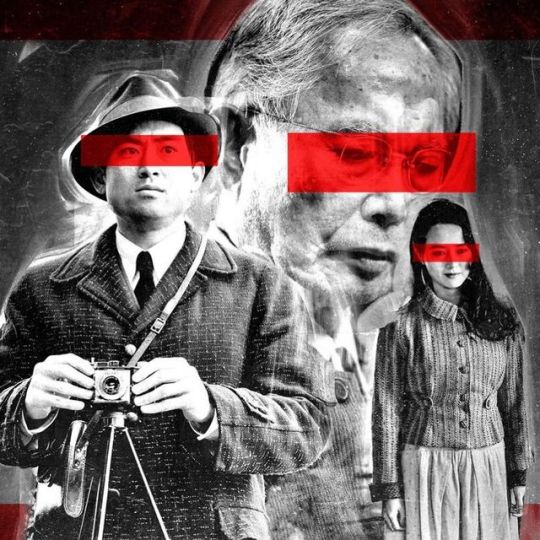
I watched the season finale of The Terror Infamy yesterday and just wanted to take a moment to say I absolutely loved the series and I want to congratulate all involved! Beautiful storytelling, amazing casting, stunning makeup, costumes and locations, a dynamic and talented cast! Easily one of the best shows on television and has been added to my “all time favorite TV series” list! While the “horror” element is what AMC mostly marketed, and used to bring you in, it was the story that kept me engaged! I cried throughout this series because of the amazing acting, characters, and historical accuracy! I kept thinking, how has this story not been told yet?! How come we don’t see more representation like this? I just can’t say enough about this show and obviously I HIGHLY recommend it! Please go out of your way to see it!! Again, congrats to all involved!!! Stunning work! #mustseetv #amc #theterror #ww2 #Japanese #JapaneseAmericans #twothumbsup https://www.instagram.com/p/B3r5d5jhxJi/?igshid=idjmeazkzrda
0 notes
Photo

Japanese-American internees mark New Year’s Eve, 12/31/1944, at the Central Utah Internment Camp in Topaz, UT. Photo by Charles E. Mace. Joseph Aoki portrays Father Time and his son Tommy, Baby New Year. Records of the Department of the Interior, War Relocation Authority, NARA ID 539711.
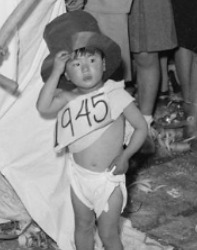
Executive Order 9066, issued by President Franklin D. Roosevelt on February 19, 1942, led to the forced relocation of approximately 120,000 Japanese Americans living on the West Coast. More than two-thirds of these people were native born American citizens. They were confined for the duration of World War II in 10 inland internment camps operated by the military. Professional photographers, including Dorothea Lange, were commissioned by the War Relocation Authority to document their daily life.
[The] photographs documenting the notification, assembly, relocation and incarceration of 120,000 Japanese Americans from 1942 until 1945... are an extraordinary record, taken by some of our greatest photographers, of a terrible injustice and the incredible dignity and resilience of its victims.
--Paul Sparrow, Director, FDR Library, from here.
Related online resources:
Japanese American Internment - main page outlining the National Archives’ extensive holdings that chronicle the internment of Japanese Americans during World War II.
Teaching With Documents: Japanese-American Internment During World War II.
Images of Internment, post by Paul M. Sparrow, Director, FDR Library, Forward with Roosevelt blog.
Japanese American Internment Curriculum Guide, FDR Library.
Images of Internment: The Incarceration of Japanese Americans During World War II, FDR Library exhibit.
“Democracy Starts Here”: 11-minute National Archives film features Cherry Tsutsumida, Civil Rights Activist and Director, National Japanese American Memorial Foundation, who was incarcerated as a child with her family and later fought for justice for Japanese Americans:
youtube
#japanese#japaneseinternment#japaneseinternmentcamps#newyear#pandemicnewyear#fdrlibrary#@PaulMSparrow1#paulsparrow#justice#civilrights#japaneseamerican#internment#WW2#WWII#njamemorial
160 notes
·
View notes
Photo
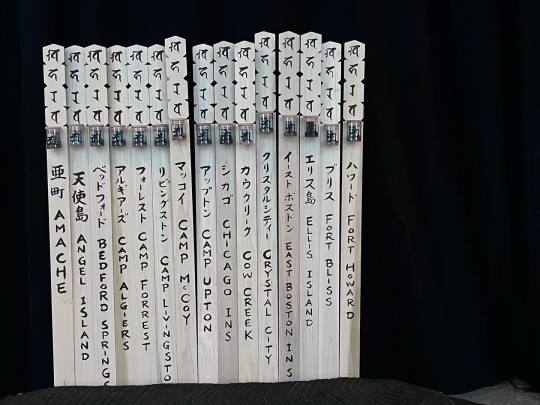
japanese-american internment remembrance | september 22 2022 #jamn #japaneseamerican #photooftheday
0 notes
Photo

Happy #aapiheritagemonth. I remember where I come from every day. I love being half-Japanese. I love my family. I know I come from strong, enduring people who survived so many hardships. #hapa #japaneseamerican #ja #aapi https://www.instagram.com/p/CdBmae9pnpz/?igshid=NGJjMDIxMWI=
2 notes
·
View notes
Photo
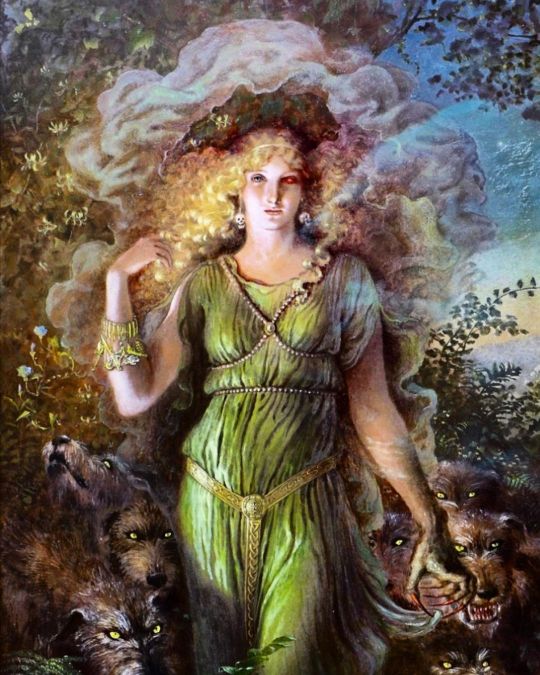
Hounds of the Morrigan, 1997 - Kinuko Yamabe Craft (Japanese-American, b. 1940) #japaneseamerican #1997 #artistshoutout #artistspotlight🔦 #houndsofthemorrigan #painting 🎨 * Oil on board (at Catalina Foothills, Arizona) https://www.instagram.com/p/CZCoJn-lfcB7n8zxKcIO4O7gnmjT44tvCRpH3E0/?utm_medium=tumblr
2 notes
·
View notes
Photo
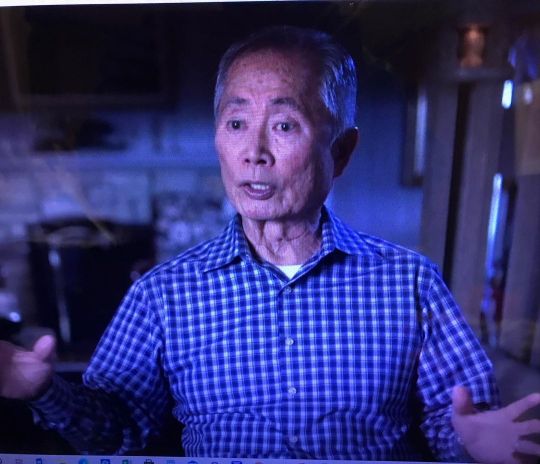
George Takei sharing his family’s story. One of 120,000 Americans who were stripped of their rights because of their ethnicity. #AndThenTheyCameForUs @kdocsff #socialjustice #filmfestival #JapaneseAmericans #NAJC #JapaneseCanadians #internment #incarceration https://www.instagram.com/p/CMWA_jZhiA9/?igshid=b83jn06wrd35
#andthentheycameforus#socialjustice#filmfestival#japaneseamericans#najc#japanesecanadians#internment#incarceration
0 notes
Photo


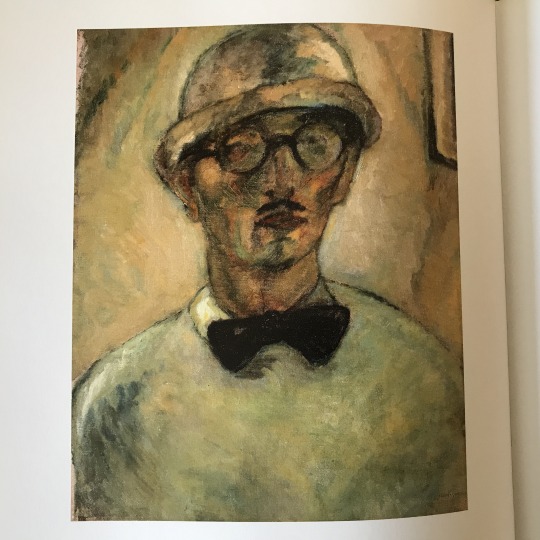
The life and career of Yasuo Kuniyoshi (1889-1953) is reminiscent of the common immigrant’s tale of searching for opportunities in a new country, yet it is an exceptional story within the genre. Not only did Kuniyoshi defeat many odds after emigrating from his native Japan, but he was someone who identified as an American, but could not become a U.S. citizen due to legal restrictions of the time. Also, while Kuniyoshi had an remarkable career, his work is little known today. In 1948, he was the first living artist to be given a retrospective exhibition at the Whitney Museum of American Art. Very active in various artists’ groups and organizations, Kuniyoshi became an officer of the American Artists’ Congress in 1936, eventually becoming president and serving in this role until 1944. He was also appointed the first president of Artists Equity and the president of An American Group, Inc.
In 1906, at the age of 16, Kuniyoshi left his home country, Japan in the hope of making a new life in America. In Japan, Kuniyoshi had studied at a school for weaving and learned traditional Japanese decorative arts and how to draw. While attending public high school in Los Angeles, a teacher told him that he had artistic talent. He worked a series of odd jobs from picking fruit in the field to working as a hotel bellhop while attending the Los Angeles School of Art and Design. Eventually, he moved to New York and continued his studies in art.
Kuniyoshi’s time in the U.S. coincides with the spread of anti-immigrant sentiment throughout the country, from the eugenics movement to the Immigration Act of 1924, which drastically cut the number of new immigrants allowed annually and practically banned all immigration from East Asia. In 1919, Kuniyoshi married an American woman, Kathrine Schmidt, for which her parents disowned her and did not speak to the couple for six years. His Boy Stealing Fruit (1923) may be interpreted as “an allegory of the marriage, where a sly boy sneaks a juicy peach from a distinctly “early Americana” bowl.” (E. Brown: pp. 12) His sense of fear, perhaps from anti-immigrant sentiment, may be felt in his other works such as Boy Frightened by Snake (1921-1922) and Child frightened by Water (1924).
Stay tuned for the Part II of Kuniyoshi’s life and career.
Image 1:
Boy Stealing Fruit, 1923
20 x 30 in.
Image 2:
Child Frightened by Water, 1924
30 1/8 x 24 1/16 in.
Image 3:
Self-Portrait, 1918
20 x 16 in
The artistic journey of Yasuo Kuniyoshi
Wolf, Tom (Tom M.) [author]
Washington, DC : Smithsonian American Art Museum, [2015]
175 pages : illustrations (chiefly color) ; 29 cm
English
Issued in connection with an exhibition held Apr. 3-Aug. 30, 2015, Smithsonian American Art Museum, Washington, DC.
HOLLIS number: 990143714410203941
#aapiheritagemonth#asianamericanartist#asianamerican#japaneseamerican#japaneseamericanartist#yasuokuniyoshi#harvardfineartslibrary#harvardfineartslib#fineartslibrary#Harvard#harvard library#HarvardLibrary#aaapi#asianamericanheritagemonth
12 notes
·
View notes
Photo

Happy memorial day! I drew my grandparents in honor of their lives. My grandpa was part of the military and helped with the reconstruction of Japan after world war 2. That's where he met my grandmother and they fell in love. After his service they moved to America to start their lives together. They faced many hardships in their lives but strived to make the world a better place. While I may not look very Japanese, I love my heritage and honor their sacrifices. They are missed! #japaneseamerican #asianamericanheritagemonth https://www.instagram.com/p/CPjcvHPDI9U/?utm_medium=tumblr
7 notes
·
View notes